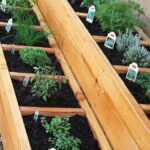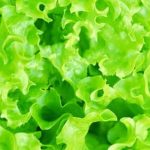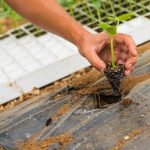Are you interested in growing vegetables in mini gardens? Mini gardening is a popular trend for urban dwellers and those with limited outdoor space. In this article, we will explore the numerous benefits of growing vegetables in mini gardens, including how to choose the right containers, select the best vegetables, properly care for your plants, and ultimately enjoy a bountiful harvest.
One of the most rewarding aspects of mini gardening is being able to grow your own fresh vegetables, regardless of space constraints. By utilizing containers such as pots, planters, or window boxes, individuals can cultivate their own produce right at home. It’s an excellent way to maximize small spaces and bring nature into urban environments.
Mini gardens also offer the opportunity to incorporate sustainable practices into everyday life by reducing food miles and minimizing waste associated with store-bought produce. Additionally, tending to a mini garden can have therapeutic benefits, providing a peaceful retreat from the hustle and bustle of city living. So let’s dive into the world of mini gardening and discover how it can provide you with an abundance of fresh, flavorful vegetables right outside your doorstep.
Choosing the Right Container
When it comes to growing vegetables in mini gardens, choosing the right container is crucial for the success of your garden. The type of container you select can impact the growth and health of your vegetables, so it’s important to choose wisely. There are several factors to consider when selecting the perfect pots, planters, or window boxes for your mini garden.
First and foremost, consider the size of the container. Different vegetables require different amounts of space to grow, so it’s essential to choose a container that will provide enough room for your chosen vegetables to thrive. For example, larger plants like tomatoes or peppers will need larger containers, while smaller plants like lettuce or herbs can be grown in smaller pots.
In addition to size, consider the material of the container. Clay pots are porous and allow for good air circulation and water drainage, while plastic pots retain moisture better. Window boxes are great for small spaces and can be mounted on walls or fences. Consider these factors when choosing containers for your mini garden to ensure that your vegetables have the best environment to grow.
| Container Type | Best Vegetables |
|---|---|
| Clay Pots | Tomatoes, Peppers |
| Plastic Pots | Lettuce, Herbs |
| Window Boxes | Succulents, Flowers |
By considering these factors and taking the time to select the right containers for your mini garden, you can set yourself up for success and ensure that your vegetables have everything they need to thrive in their small space.
Selecting the Best Vegetables
When it comes to growing vegetables in mini gardens, choosing the right vegetables is essential for successful and abundant harvests. Whether you have limited space on a balcony, patio, or even just a small corner of your backyard, there are plenty of vegetables that thrive in small spaces. Here are some tips for selecting the best vegetables for your mini garden:
- Consider the size of the plant: When choosing vegetables for your mini garden, opt for compact or dwarf varieties that don’t require a lot of space to grow. Look for bush or determinate tomato plants, baby carrots, lettuce, and dwarf bean varieties.
- Choose high-yielding plants: In a confined space, it’s important to select vegetables that produce a high yield in a small area. Consider planting zucchini, cherry tomatoes, peppers, and herbs like basil and cilantro for maximum harvest in minimal space.
- Focus on vertical growth: Vegetables that can be trained to grow vertically are ideal for small gardens. Think about planting climbers like cucumbers, pole beans, and peas that can utilize trellises or other supports to maximize space.
In addition to these tips, it’s important to consider your personal preferences and what you enjoy eating when choosing vegetables for your mini garden. By carefully selecting the right vegetables for your space and needs, you can create a beautiful and bountiful mini garden that will provide fresh produce throughout the growing season.
Remember that with proper care and maintenance-like watering regularly and tending to any potential pests or diseases-you can ensure a healthy and thriving mini garden filled with delicious homegrown vegetables. With some thoughtful planning and consideration of these tips, you can create a thriving mini garden regardless of the limitations on your outdoor space.
Soil and Fertilization
When it comes to growing vegetables in mini gardens, the quality of the soil and proper fertilization are essential for ensuring optimal growth and bountiful harvests. The right soil provides the necessary nutrients for healthy plant development, while proper fertilization helps to replenish these nutrients over time. Here are some key considerations for soil and fertilization in mini gardens:
Choosing the right soil is crucial for the success of your mini garden. Opt for a high-quality potting mix that is well-draining and nutrient-rich. Avoid using garden soil, as it may be too heavy and compact for container gardening. Look for mixes specifically designed for container gardening, which often contain added organic matter such as compost or peat moss.
In terms of fertilization, regular feeding is essential to ensure that your vegetables have access to the nutrients they need to thrive. Consider using a balanced, water-soluble fertilizer that is specifically formulated for vegetables. Follow the instructions on the label for how often and how much to feed your plants, as over-fertilization can be detrimental to their health.
It’s important to monitor the condition of your mini garden’s soil throughout the growing season. As plants grow and produce crops, they deplete the nutrients in the soil.
Regularly check for signs of nutrient deficiencies, such as yellowing leaves or stunted growth, and address any issues promptly with appropriate fertilization. By understanding the importance of quality soil and proper fertilization techniques, you can set your mini garden up for success and enjoy an abundance of fresh vegetables throughout the growing season.
Watering and Maintenance
When it comes to growing vegetables in mini gardens, proper watering and maintenance are key to ensuring healthy and thriving plants. In this section, we will provide a step-by-step guide to help you maintain your mini garden and keep your vegetables in optimal condition.
Watering Guide
One of the most important factors in maintaining a successful mini garden is providing the right amount of water to your vegetables. Different plants have different water needs, so it’s essential to understand the specific requirements of each vegetable in your mini garden. Some may need daily watering, while others may only need to be watered every few days.
To ensure proper hydration, it’s best to water your mini garden in the morning or early evening when temperatures are cooler and evaporation is minimal. This helps prevent water loss and ensures that your vegetables have enough time to absorb the moisture they need.
Maintenance Tips
In addition to watering, there are other maintenance tasks that are crucial for the health of your mini garden. Regularly checking for pests or diseases is important so that you can address any issues before they spread and cause damage to your plants. It’s also essential to remove any weeds that may compete with your vegetables for nutrients and water.
Pruning and harvesting are also important aspects of maintenance. Pruning helps promote healthy growth and prevents overcrowding, while regular harvesting encourages new growth and ensures that your vegetables stay fresh and tasty.
Fertilization
Proper fertilization is also an essential part of maintaining a healthy mini garden. Using a high-quality soil enriched with organic matter can provide some of the necessary nutrients, but additional fertilization may be needed as well. Selecting a fertilizer that is suited for vegetable growth and following the recommended application guidelines will help ensure that your plants receive all the nutrients they need for optimal development.
By following these watering and maintenance guidelines, you can ensure that your mini garden thrives, yielding a bountiful harvest of delicious, homegrown vegetables.
Maximizing Space
One of the biggest challenges in growing vegetables in mini gardens is maximizing space. With limited area to work with, it’s essential to get creative in order to make the most of your mini garden. Two popular methods for maximizing space in a mini garden are vertical gardening and companion planting.
Vertical Gardening
Vertical gardening involves growing plants upwards, using walls, trellises, or other structures to support the plants as they grow. This technique is perfect for mini gardens, as it allows you to utilize the vertical space that might otherwise go unused. Popular vegetables for vertical gardening include tomatoes, cucumbers, and peas. By training these plants to grow upwards, you can save valuable ground space for other crops.
Companion Planting
Companion planting is another effective way to maximize space in a mini garden. This method involves planting different types of vegetables together that benefit each other in some way. For example, tall plants can provide shade for sun-sensitive crops, while certain plants can repel pests that might otherwise damage neighboring crops. By strategically planning your plantings based on their compatibility with one another, you can make the most of your mini garden’s limited space.
In addition to these methods, there are also other creative solutions such as using hanging baskets or creating tiered planters to increase growing area while taking up minimal floor space. With some planning and ingenuity, it’s possible to grow a wide variety of vegetables in even the smallest of gardens.
Common Challenges
One of the most common challenges that come with growing vegetables in mini gardens is dealing with pests and diseases. These issues can quickly turn a thriving mini garden into a struggling one if not properly addressed. Some of the most problematic pests for mini gardens include aphids, spider mites, and caterpillars. These tiny invaders can wreak havoc on your vegetable plants if left unchecked.
To address pest issues in your mini garden, consider using natural remedies such as insecticidal soaps or neem oil. These organic solutions can help keep pests at bay without introducing harmful chemicals to your mini garden. Additionally, practicing good garden hygiene by regularly removing dead or damaged plant material can help prevent pest infestations.
In addition to pests, diseases can also pose a threat to your mini garden. Common issues such as powdery mildew and blight can impact the health of your vegetable plants. To combat these diseases, it’s important to practice proper spacing between plants to promote air circulation and reduce moisture buildup. Additionally, avoiding overhead watering and instead focusing on watering the soil directly can help prevent the spread of disease in your mini garden.
Overall, while pests and diseases are common challenges when growing vegetables in mini gardens, with proactive measures and careful attention to plant health, you can successfully navigate these obstacles and enjoy a bountiful harvest from your mini garden.
| Challenges | Solutions |
|---|---|
| Pests | Use insecticidal soaps or neem oil; Practice good garden hygiene |
| Diseases | Space plants for air circulation; Avoid overhead watering |
Harvesting and Enjoying Your Mini Garden
In conclusion, growing vegetables in mini gardens offers a multitude of benefits, from providing fresh produce to adding beauty and greenery to any space. With the right container, selection of vegetables, soil and fertilization, watering and maintenance methods, as well as creative space-maximizing solutions like vertical gardening and companion planting, anyone can successfully cultivate a bountiful mini garden.
However, it’s important to be aware of common challenges such as pests and diseases that may arise, and to address them promptly to ensure the health and vitality of your mini garden.
When it comes time for harvesting your mini garden, it’s important to pick your vegetables at the peak of freshness. This may require daily monitoring of your plants and close attention to when each vegetable is ready for picking. Once harvested, take the time to savor the fruits of your labor by incorporating them into delicious meals or sharing them with friends and family. There’s nothing quite like enjoying a meal made with vegetables you grew yourself.
The satisfaction of growing your own vegetables in mini gardens goes beyond just having access to fresh produce. It’s an incredibly rewarding experience that allows you to connect with nature, appreciate the hard work that goes into cultivating food, and enjoy the feeling of self-sufficiency. So whether you’re a seasoned gardener or just starting out, consider starting a mini garden today and experience the joy of growing your own food.
Frequently Asked Questions
What Are the Best Vegetables to Grow in a Small Garden?
The best vegetables to grow in a small garden are those that don’t take up a lot of space, such as lettuce, radishes, carrots, and green onions. These can be easily grown in containers or small plots.
What Vegetables Can I Grow in a Small Raised Bed?
In a small raised bed, you can grow a variety of vegetables including tomatoes, peppers, spinach, and herbs like basil and cilantro. The key is to choose compact varieties and plan your layout efficiently.
How Do You Layout a Small Vegetable Garden?
When laying out a small vegetable garden, consider using raised beds or containers to maximize space. Choose vegetables that are compatible in terms of sun exposure and water needs, and plan for proper spacing to avoid overcrowding. Designing your garden with efficiency in mind will help you make the most of the space available.

If you’re looking to get into vegetable gardening, or are just looking for some tips on how to make your current garden better, then you’ve come to the right place! My name is Ethel and I have been gardening for years. In this blog, I’m going to share with you some of my best tips on how to create a successful vegetable garden.





